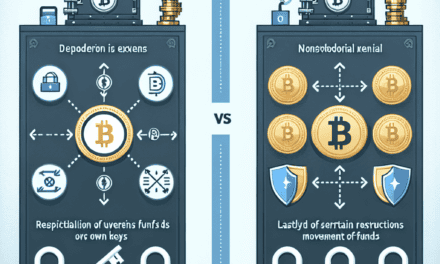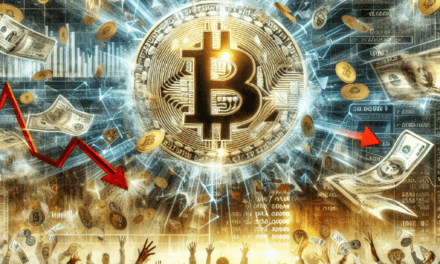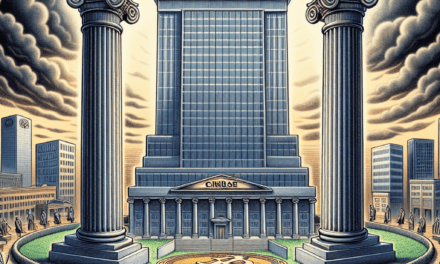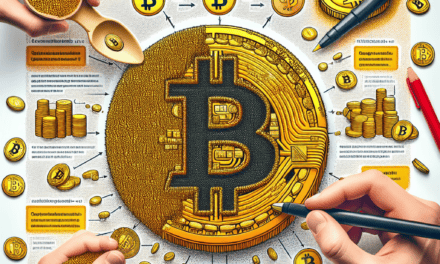“From Boom to Bust: Unraveling the Mystery Behind Bored Ape NFT’s Price Drop.”
Introduction
In recent months, the once-booming market for Bored Ape Yacht Club (BAYC) NFTs has experienced a significant downturn, with prices plummeting to their lowest levels since 2022. This decline has raised questions and concerns among investors, collectors, and market analysts about the factors contributing to the drop in value of these highly sought-after digital assets. Several elements appear to be influencing this trend, including broader market volatility, shifts in investor sentiment, and evolving perceptions of the NFT space. As the market adjusts, stakeholders are keenly observing these dynamics to understand the future trajectory of Bored Ape NFTs and the wider implications for the digital collectibles market.
Market Saturation: Too Many NFTs, Not Enough Buyers
The recent decline in the prices of Bored Ape NFTs, reaching lows not seen since 2022, has sparked considerable discussion within the digital asset community. This downturn can be attributed to a confluence of factors, with market saturation playing a pivotal role. As the NFT market has expanded rapidly over the past few years, the sheer volume of available digital assets has outpaced the number of interested buyers, leading to a supply-demand imbalance that has exerted downward pressure on prices.
Initially, the NFT market was characterized by a sense of novelty and exclusivity, with early adopters eager to invest in unique digital collectibles. However, as the market matured, the proliferation of NFTs across various platforms has diluted this exclusivity. The Bored Ape Yacht Club, once a symbol of status and innovation, now finds itself competing in an increasingly crowded marketplace. This saturation has made it challenging for individual projects to maintain their value, as potential buyers are overwhelmed by the sheer number of options available.
Moreover, the influx of new NFT projects has not been matched by a corresponding increase in the number of buyers. While the initial hype surrounding NFTs attracted a wave of investors, many of whom were driven by the fear of missing out, the market has struggled to sustain this level of interest. As a result, the pool of active buyers has not grown at the same pace as the supply of NFTs, leading to a situation where many digital assets remain unsold or are sold at significantly reduced prices.
In addition to market saturation, the decline in Bored Ape NFT prices can also be linked to broader economic factors. The global economic climate has been marked by uncertainty, with inflationary pressures and interest rate hikes affecting consumer spending habits. In such an environment, discretionary spending on digital collectibles is often one of the first areas to be curtailed. Consequently, the demand for NFTs, including Bored Apes, has waned as potential buyers prioritize essential expenditures over luxury items.
Furthermore, the NFT market has faced increased scrutiny and skepticism from both regulators and the public. Concerns about the environmental impact of blockchain technology, coupled with high-profile cases of fraud and theft, have cast a shadow over the industry. This negative perception has deterred some potential investors, further exacerbating the demand shortfall.
Despite these challenges, it is important to recognize that the NFT market is still in its nascent stages. While the current downturn may be disheartening for some investors, it also presents an opportunity for the market to recalibrate and address the issues that have contributed to its volatility. For instance, projects that focus on building strong communities and offering tangible utility to their holders may be better positioned to weather the storm.
In conclusion, the decline in Bored Ape NFT prices to 2022 lows can be largely attributed to market saturation, where the supply of digital assets has outstripped demand. This situation has been compounded by broader economic uncertainties and increased scrutiny of the NFT space. However, as the market continues to evolve, there remains potential for recovery and growth, provided that projects can adapt to the changing landscape and address the concerns of both current and prospective investors.
Economic Factors: How Global Financial Trends Impact NFT Prices
The recent decline in Bored Ape NFT prices, reaching lows not seen since 2022, has sparked considerable discussion among investors and enthusiasts alike. To understand this downturn, it is essential to examine the broader economic factors influencing the NFT market. The intersection of global financial trends and the digital asset space is complex, yet it provides critical insights into the current state of NFT valuations.
Firstly, the global economic environment has been marked by significant volatility, which has inevitably impacted the NFT market. Inflation rates have surged in many parts of the world, leading central banks to adopt tighter monetary policies. As interest rates rise, the cost of borrowing increases, which can dampen investment in riskier assets, including NFTs. Investors often seek safer, more stable returns during such periods, diverting funds away from speculative markets. Consequently, the demand for NFTs, including Bored Apes, has waned, contributing to the decline in prices.
Moreover, the cryptocurrency market, which is closely linked to NFTs, has also experienced substantial fluctuations. Cryptocurrencies like Bitcoin and Ethereum have seen their values oscillate dramatically, influenced by regulatory developments, technological advancements, and macroeconomic factors. Since NFTs are typically purchased using cryptocurrencies, any instability in the crypto market can directly affect NFT prices. When cryptocurrency values drop, the purchasing power of potential NFT buyers diminishes, leading to reduced demand and lower prices.
In addition to these macroeconomic factors, the NFT market itself has undergone a maturation process. The initial hype surrounding NFTs has subsided, and the market is now experiencing a natural correction. During the early stages of the NFT boom, prices were often driven by speculation and the novelty of digital ownership. As the market matures, investors are becoming more discerning, focusing on the intrinsic value and utility of NFTs rather than mere speculation. This shift in investor sentiment has led to a reevaluation of NFT prices, including those of Bored Apes.
Furthermore, the broader financial markets have been influenced by geopolitical tensions and supply chain disruptions, which have created an environment of uncertainty. Such conditions often lead investors to adopt a more cautious approach, reallocating their portfolios to minimize risk. This cautious sentiment has spilled over into the NFT market, where investors are increasingly scrutinizing the long-term viability and potential returns of their digital assets.
It is also important to consider the role of regulatory developments in shaping the NFT landscape. Governments around the world are grappling with how to regulate digital assets, and any potential regulatory changes can have significant implications for the market. Uncertainty regarding future regulations can deter investment, as market participants may adopt a wait-and-see approach until clearer guidelines are established. This regulatory uncertainty has likely contributed to the recent decline in Bored Ape NFT prices.
In conclusion, the plummeting prices of Bored Ape NFTs can be attributed to a confluence of economic factors. Global financial trends, including inflation, interest rate hikes, and cryptocurrency volatility, have played a pivotal role in shaping the current market dynamics. Additionally, the maturation of the NFT market, coupled with geopolitical uncertainties and regulatory concerns, has further influenced investor behavior. As the market continues to evolve, it will be crucial for investors to remain informed about these economic factors and their potential impact on NFT valuations.
Investor Sentiment: Shifting Perceptions in the NFT Community
The recent downturn in the prices of Bored Ape NFTs, which have plummeted to their lowest levels since 2022, has sparked considerable discussion within the NFT community. This decline in value is not merely a reflection of market volatility but also indicative of shifting investor sentiment. As the NFT market matures, the perceptions and expectations of investors are evolving, leading to a reassessment of the intrinsic value of digital assets like Bored Ape NFTs.
Initially, Bored Ape NFTs captured the imagination of investors and collectors alike, becoming a symbol of status and exclusivity within the burgeoning NFT space. Their popularity was fueled by a combination of celebrity endorsements, social media buzz, and the allure of owning a unique digital asset. However, as the market has developed, the factors driving investor interest have become more complex. The initial frenzy has given way to a more discerning approach, with investors increasingly scrutinizing the long-term value proposition of NFTs.
One of the primary reasons for the decline in Bored Ape NFT prices is the broader market correction affecting the entire cryptocurrency and NFT sectors. As speculative bubbles burst, investors are becoming more cautious, seeking tangible utility and sustainable value in their investments. This shift in focus has led to a reevaluation of projects that were previously driven by hype rather than substance. Consequently, NFTs that lack clear utility or a compelling narrative are experiencing a decline in demand.
Moreover, the NFT market is witnessing an influx of new projects, each vying for attention and investment. This saturation has diluted the uniqueness that once set collections like Bored Ape apart. As a result, investors are diversifying their portfolios, exploring opportunities beyond the established blue-chip NFTs. This diversification is further fueled by the growing interest in NFTs with real-world applications, such as those linked to gaming, virtual real estate, and decentralized finance.
In addition to market dynamics, regulatory developments are also influencing investor sentiment. Governments and regulatory bodies worldwide are increasingly scrutinizing the NFT space, raising concerns about issues such as intellectual property rights, money laundering, and consumer protection. This regulatory uncertainty is prompting investors to adopt a more cautious approach, impacting the perceived value of NFTs like Bored Ape.
Furthermore, the environmental impact of NFTs, particularly those based on energy-intensive blockchain networks, is becoming a significant consideration for investors. As awareness of climate change and sustainability grows, investors are increasingly factoring in the environmental footprint of their digital assets. This shift in priorities is leading to a preference for NFTs that are minted on eco-friendly platforms, further affecting the demand for traditional NFTs.
In conclusion, the decline in Bored Ape NFT prices to 2022 lows is a multifaceted phenomenon driven by changing investor sentiment. As the NFT market continues to evolve, investors are becoming more discerning, prioritizing utility, sustainability, and regulatory compliance over mere hype. This shift in perception is reshaping the landscape of the NFT community, prompting a reevaluation of what constitutes value in the digital asset space. As a result, projects that can adapt to these changing expectations are likely to thrive, while those that cannot may continue to face challenges in maintaining their market position.
Regulatory Concerns: The Impact of Potential Government Interventions
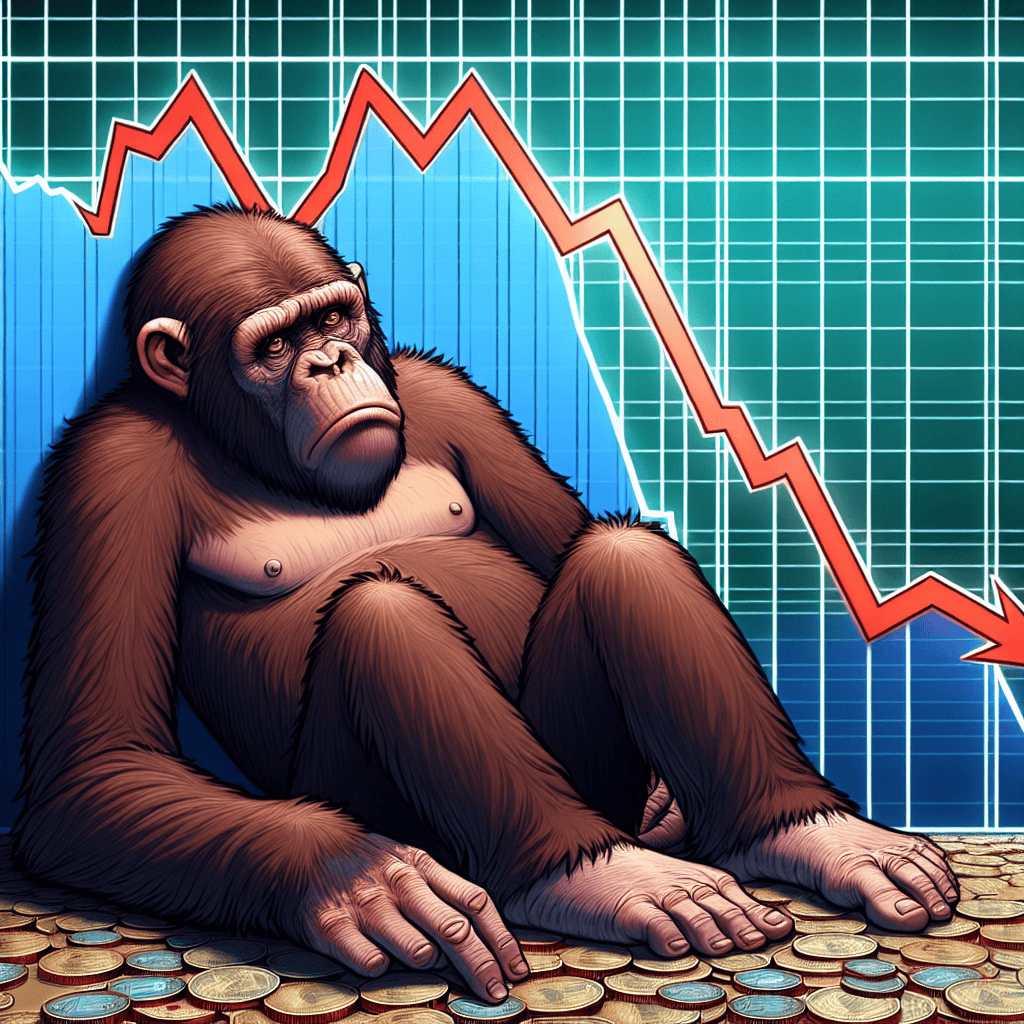
The recent decline in Bored Ape NFT prices to their lowest levels since 2022 has sparked widespread concern and speculation within the digital asset community. One of the primary factors contributing to this downturn is the growing apprehension surrounding potential government interventions in the cryptocurrency and NFT markets. As regulatory bodies worldwide begin to scrutinize these burgeoning sectors more closely, the uncertainty surrounding future regulations has cast a shadow over investor confidence.
To understand the impact of potential government interventions, it is essential to consider the broader context of the cryptocurrency and NFT markets. These markets have experienced explosive growth over the past few years, attracting significant attention from both retail and institutional investors. However, this rapid expansion has also raised concerns among regulators about issues such as market manipulation, money laundering, and consumer protection. Consequently, governments are increasingly exploring ways to regulate these markets to ensure their stability and integrity.
In the case of NFTs, the unique nature of these digital assets presents additional challenges for regulators. Unlike cryptocurrencies, which function as digital currencies, NFTs represent ownership of a specific digital item, such as art, music, or virtual real estate. This distinction complicates the regulatory landscape, as traditional financial regulations may not be directly applicable to NFTs. As a result, regulators are faced with the task of developing new frameworks that address the unique characteristics of NFTs while also protecting investors and maintaining market integrity.
The uncertainty surrounding these potential regulatory changes has had a tangible impact on the Bored Ape NFT market. Investors, wary of the possibility of stringent regulations, may be hesitant to commit significant capital to NFTs, leading to decreased demand and, consequently, lower prices. Furthermore, the lack of clarity regarding future regulations can create an environment of fear and doubt, prompting some investors to divest from NFTs altogether in favor of more traditional, regulated assets.
Moreover, the impact of potential government interventions is not limited to investor sentiment. The prospect of increased regulation can also affect the behavior of creators and platforms within the NFT ecosystem. For instance, creators may face new compliance requirements, such as verifying the authenticity of their digital works or ensuring that their sales processes adhere to anti-money laundering regulations. Similarly, NFT platforms may be required to implement more robust security measures and reporting protocols to comply with regulatory standards. These additional burdens could stifle innovation and growth within the NFT space, further contributing to the decline in Bored Ape NFT prices.
In addition to regulatory concerns, it is important to consider the broader economic environment and its influence on the NFT market. Rising interest rates, inflationary pressures, and geopolitical tensions have created a challenging landscape for risk assets, including NFTs. In such an environment, investors may be more inclined to seek safety in traditional assets, exacerbating the downward pressure on NFT prices.
In conclusion, the plummeting prices of Bored Ape NFTs can be attributed, in part, to the growing concerns surrounding potential government interventions in the cryptocurrency and NFT markets. As regulators grapple with the complexities of these digital assets, the uncertainty surrounding future regulations has led to decreased investor confidence and demand. Additionally, the broader economic environment has further compounded these challenges, creating a perfect storm that has driven Bored Ape NFT prices to their lowest levels since 2022. As the regulatory landscape continues to evolve, it will be crucial for stakeholders within the NFT ecosystem to adapt and navigate these changes to ensure the long-term viability and success of this innovative market.
Competition: New NFT Projects and Their Effect on Bored Ape Values
The recent decline in Bored Ape Yacht Club (BAYC) NFT prices to their lowest levels since 2022 has sparked considerable discussion within the digital asset community. This downturn can be attributed to several factors, with increased competition from new NFT projects playing a significant role. As the NFT market continues to evolve, the influx of innovative projects has introduced a dynamic shift in investor interest and market dynamics, thereby impacting the valuation of established collections like Bored Ape.
To begin with, the NFT landscape has witnessed a surge in the number of new projects, each vying for attention and investment. These projects often bring fresh concepts, unique artistic styles, and novel utility features that captivate the imagination of collectors and investors alike. As a result, the market has become increasingly saturated, leading to a redistribution of interest and capital. This shift has inevitably affected the demand for older collections, including Bored Ape, as collectors diversify their portfolios to include newer, potentially more lucrative assets.
Moreover, the competitive nature of the NFT market has driven creators to innovate continuously, offering enhanced value propositions to attract buyers. New projects often incorporate advanced technologies, such as augmented reality and interactive experiences, which add layers of engagement beyond traditional static images. These innovations not only capture the attention of tech-savvy investors but also set new standards for what NFTs can offer. Consequently, established collections like Bored Ape, which primarily rely on their initial cultural impact and community-driven value, may struggle to maintain their allure in the face of such advancements.
In addition to technological innovation, the thematic diversity of new NFT projects has expanded significantly. While Bored Ape initially gained popularity due to its unique artistic style and the sense of exclusivity it provided, newer projects are exploring a wide array of themes, from environmental conservation to social justice. This thematic expansion resonates with a broader audience, attracting individuals who are passionate about specific causes or narratives. As a result, the appeal of Bored Ape, which may not align with these emerging themes, could diminish as collectors seek NFTs that reflect their personal values and interests.
Furthermore, the rise of decentralized finance (DeFi) and its integration with NFTs has introduced new investment opportunities that compete with traditional NFT collections. Projects that combine DeFi elements with NFTs offer potential financial incentives, such as staking rewards or yield farming, which can be more attractive to investors seeking both artistic and financial returns. This financialization of NFTs has shifted some investor focus away from purely aesthetic collections like Bored Ape, as they explore options that promise tangible economic benefits.
In conclusion, the decline in Bored Ape NFT prices to 2022 lows can be largely attributed to the intensified competition from new NFT projects. The influx of innovative, technologically advanced, and thematically diverse collections has reshaped the market landscape, drawing interest and investment away from established collections. As the NFT space continues to mature, it is crucial for projects like Bored Ape to adapt and evolve in order to maintain their relevance and appeal. Whether through technological enhancements, thematic diversification, or integration with emerging financial models, the ability to innovate will be key to navigating the challenges posed by an ever-expanding and competitive NFT market.
Utility and Value: Are Bored Apes Offering Enough to Hold Value?
The recent decline in the prices of Bored Ape NFTs to their 2022 lows has sparked a significant conversation about the utility and value these digital assets offer. As the NFT market continues to evolve, questions about the sustainability and intrinsic value of such assets have become increasingly pertinent. Bored Ape Yacht Club (BAYC), once a symbol of digital status and exclusivity, now faces scrutiny as its market value diminishes. This downturn prompts an examination of whether Bored Apes are providing enough utility to maintain their value in a rapidly changing digital landscape.
Initially, Bored Apes captured the imagination of collectors and investors alike, offering not just ownership of unique digital art but also access to an exclusive community. This community aspect was a significant draw, as it promised networking opportunities, exclusive events, and a sense of belonging among a select group of individuals. However, as the novelty of NFTs begins to wane, the question arises: is community access alone sufficient to sustain the value of these digital assets? While the social aspect of owning a Bored Ape remains appealing to some, it may not be enough to justify the high prices that were once commanded.
Moreover, the broader NFT market has seen a shift towards projects that offer tangible utility beyond mere ownership. For instance, some NFTs now provide holders with voting rights in decentralized organizations, access to exclusive content, or even revenue-sharing opportunities. In contrast, Bored Apes have largely remained static in terms of additional utility, relying heavily on their initial allure and the prestige associated with ownership. This lack of evolving utility may contribute to the declining interest and, consequently, the falling prices.
Furthermore, the economic climate has also played a role in the depreciation of Bored Ape NFTs. As global markets face uncertainty, investors are becoming more cautious, seeking assets with clear and demonstrable value. In such an environment, speculative assets like NFTs are often the first to experience a downturn. The decline in cryptocurrency values, which are closely tied to the NFT market, has also exacerbated this trend. As cryptocurrencies lose value, so too do the NFTs that are predominantly traded using these digital currencies.
Additionally, the influx of new NFT projects has increased competition within the market. With countless new collections emerging, each promising unique features and benefits, the once-dominant Bored Apes now find themselves vying for attention in a crowded space. This saturation has diluted the exclusivity that initially set Bored Apes apart, making it more challenging for them to maintain their previous market position.
In conclusion, the plummeting prices of Bored Ape NFTs can be attributed to a combination of factors, including limited utility, economic conditions, and increased market competition. While the community aspect remains a valuable component, it may not be sufficient to sustain long-term value without additional utility or innovation. As the NFT market continues to mature, projects that adapt and offer tangible benefits are more likely to thrive. For Bored Apes to regain their former glory, they may need to evolve beyond their current offerings, embracing new opportunities to provide value to their holders.
Celebrity Influence: The Role of Endorsements and Their Waning Impact
The recent decline in Bored Ape NFT prices to their 2022 lows has sparked widespread discussion about the factors contributing to this downturn. Among the myriad influences, the role of celebrity endorsements has been particularly noteworthy. Initially, the involvement of high-profile celebrities in the NFT space generated significant buzz and contributed to the rapid appreciation of Bored Ape NFTs. Celebrities such as Snoop Dogg, Eminem, and Paris Hilton, among others, lent their star power to these digital assets, creating a sense of exclusivity and desirability. Their endorsements were instrumental in attracting a broader audience, including those who might not have otherwise engaged with the NFT market.
However, as the market matured, the impact of celebrity endorsements began to wane. One reason for this shift is the growing awareness among investors and collectors that celebrity involvement does not necessarily equate to long-term value. While a celebrity’s purchase of a Bored Ape NFT might initially drive up prices due to increased visibility and perceived prestige, it does not guarantee sustained interest or appreciation. As the novelty of celebrity involvement wore off, the market began to recalibrate, focusing more on the intrinsic value and utility of the NFTs themselves rather than the personalities associated with them.
Moreover, the oversaturation of celebrity endorsements in the NFT space has contributed to their diminishing impact. As more celebrities jumped on the bandwagon, the uniqueness of such endorsements diminished. What was once a novel and exciting development became commonplace, leading to a dilution of the perceived value that celebrity involvement once brought. This oversaturation has made it increasingly difficult for any single endorsement to stand out and significantly influence market dynamics.
In addition to these factors, the broader economic environment has also played a role in the declining influence of celebrity endorsements on Bored Ape NFT prices. The global economic uncertainty and tightening financial conditions have led investors to become more cautious and discerning in their investment choices. In such an environment, the speculative nature of NFTs, even those endorsed by celebrities, has become less appealing. Investors are now more focused on tangible assets and investments with clear utility and value propositions, further diminishing the impact of celebrity-driven hype.
Furthermore, the NFT market itself has evolved, with a growing emphasis on community and utility. Collectors and investors are increasingly looking for NFTs that offer more than just aesthetic appeal or celebrity association. Projects that provide real-world applications, community engagement, and long-term development plans are gaining traction. This shift in focus has reduced the relative importance of celebrity endorsements, as the market now prioritizes substance over style.
In conclusion, while celebrity endorsements initially played a significant role in driving the popularity and prices of Bored Ape NFTs, their impact has waned due to a combination of market maturation, oversaturation, economic factors, and evolving investor priorities. As the NFT space continues to develop, it is likely that the focus will increasingly shift towards projects that offer genuine value and utility, rather than relying solely on the allure of celebrity involvement. This transition marks a critical juncture in the evolution of the NFT market, as it moves towards a more sustainable and value-driven future.
Q&A
1. **What are Bored Ape NFTs?**
Bored Ape NFTs are digital collectibles featuring unique cartoon apes, part of the Bored Ape Yacht Club (BAYC) collection on the Ethereum blockchain.
2. **What caused the decline in Bored Ape NFT prices?**
The decline is attributed to a combination of factors including market saturation, decreased demand, broader cryptocurrency market downturns, and changing investor sentiment.
3. **How has the overall NFT market affected Bored Ape prices?**
The overall NFT market has experienced a cooling period, with reduced trading volumes and lower prices, impacting high-profile collections like Bored Ape Yacht Club.
4. **What role does cryptocurrency volatility play in the price decline?**
Cryptocurrency volatility, particularly in Ethereum, affects NFT prices since most NFTs are bought and sold using cryptocurrencies, leading to fluctuating valuations.
5. **Have there been any specific events impacting Bored Ape prices?**
Specific events such as security breaches, scams, or negative publicity around NFTs can contribute to declining confidence and prices in the market.
6. **Are there any signs of recovery for Bored Ape NFTs?**
While short-term recovery is uncertain, long-term prospects depend on market stabilization, renewed interest, and potential utility or partnerships enhancing value.
7. **What strategies are collectors using in response to the price decline?**
Collectors may adopt strategies such as holding for long-term potential, diversifying their NFT portfolios, or selling to cut losses amid the downturn.
Conclusion
The decline in Bored Ape NFT prices to 2022 lows can be attributed to several factors. Market saturation and a broader downturn in the cryptocurrency and NFT markets have reduced investor enthusiasm and speculative buying. Additionally, increased competition from other NFT projects and a shift in consumer interest towards utility-driven NFTs have further impacted demand. Economic uncertainties and regulatory concerns surrounding digital assets have also contributed to the decline. Overall, the combination of these elements has led to a significant decrease in the perceived value and market prices of Bored Ape NFTs.


